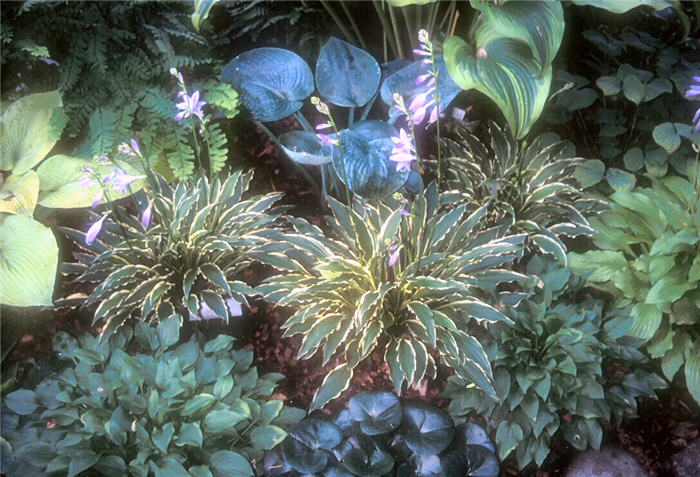| Botanical Name: Hosta 'Stilleto' | |
| Common Name: Stilleto Hosta |

-
Anatomy
-
Culture
-
Design
Plant Type
Ground cover, Perennial
Height Range
Under 1'
Flower Color
Purple
Flower Season
Summer
Leaf Color
Green, White, Variegated
Bark Color
n/a
Fruit Color
n/a
Fruit Season
n/a
Sun
Half, Shade
Water
High, Extra in Summer
Growth Rate
Slow
Soil Type
Loam
Soil Condition
Average, Rich, Well-drained
Soil pH
Neutral
Adverse Factors
n/a
Design Styles
English Cottage, Formal, Japanese, Woodland
Accenting Features
Fragrance, Unusual Foliage
Seasonal Interest
Summer
Location Uses
Entry, Perennial Border, Shrub Border, Foundation, Patio, Walkways
Special Uses
Container, Cut Flowers, Mass Planting, Small Spaces
Attracts Wildlife
n/a
Information by: Stephanie Duer
Photographer: Bobbie Schwartz
Photographer: Bobbie Schwartz
-
Description
-
Notes
Long, narrow, wavy green leaves with thin white margins makes 'Stiletto' a distinctive small hosta. A stoloniferous growth habit lends itself well to use in borders as well as an edging plant. Funnel-shaped purple striped flowers in late summer. Grows 10 inches tall and about 20 to 24 inches wide, though it will spread out wider over time. Flower scapes are about 12 inches tall.
Grow in well drained soil in part shade to full shade to dappled light. Some varieties are listed as being suitable for full sun, but in our hot, dry climate, they all benefit from some mid-day sun protection. Ideally, provide a loamy soil, amended with organic material. Remove spent flower scapes after blooming to encourage more flowering and for a tidy appearance. In early spring, remove spent foliage, taking care to watch for new foliage emerging from the crown. Though not thought of as a "water-wise" plant, Hostas do remarkably well in dry part-shade to full-shade conditions, and are frequently the victim of over-watering, succumbing to crown or root rot.